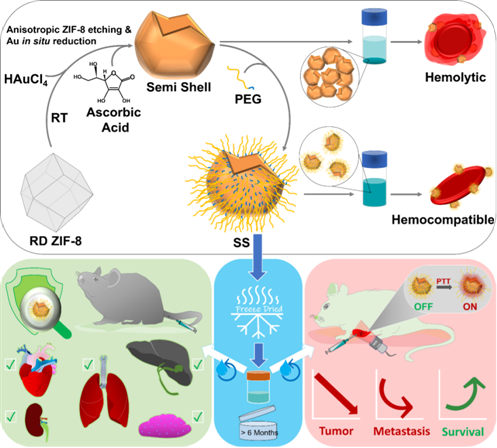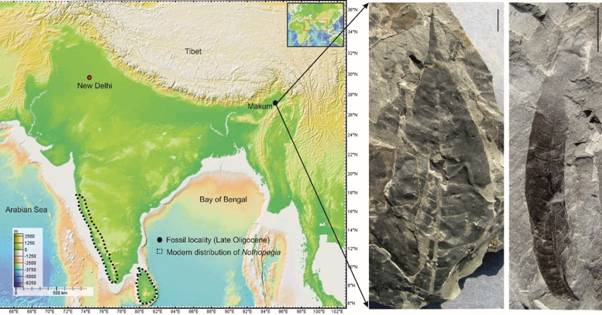Topic- 1: The comprehensive partnership between the Republic of Cyprus and the Republic of India
GS-2: International Relation
The context:
The President of the Republic of Cyprus, Mr. Nikos Christodoulides, warmly welcomed the Prime Minister of the Republic of India, Shri Narendra Modi, for an official visit to Cyprus from 15 to 16 June 2025. Prime Minister Modi’s visit, the first by an Indian Prime Minister to Cyprus in over two decades, marks a historic milestone and reaffirms the deep and enduring friendship between the two nations.
India–Cyprus Joint Declaration: Key Points
Shared Values and Global Commitments
-
- Reaffirmation of shared commitment to peace, democracy, rule of law, multilateralism, and sustainable development.
- Emphasis on a rules-based international order, UNCLOS, maritime freedom, and sovereignty.
- Support for sovereignty and territorial integrity of all nations; discussions on the Middle East and Ukraine.
- Support for India’s entry into the Nuclear Suppliers Group and strengthening global non-proliferation architecture.
- Cooperation on implementing the 2024 Apia Commonwealth Ocean Declaration and advancing sustainable ocean governance.
- Support for UNSC reform; Cyprus backs India’s permanent membership.
- Mutual support for candidatures at multilateral forums and within the UN and Commonwealth.
Political Dialogue
-
- Agreement on regular bilateral political dialogue via mechanisms between respective foreign ministries.
- Joint monitoring and implementation of an Action Plan in coordination with competent authorities.
Support for Sovereignty and Peace
-
- Affirmation of support for a UN-facilitated settlement of the Cyprus Question on a bizonal, bicommunal federation.
- India reaffirms support for sovereignty and territorial integrity of Cyprus.
- Call to avoid unilateral actions and resume meaningful negotiations.
Security, Defence, and Crisis Cooperation
-
- Strong condemnation of terrorism and violent extremism, especially cross-border terrorism.
- Cyprus expressed solidarity with India, condemned terrorist attacks in Pahalgam, J&K.
- Commitment to zero tolerance to terrorism, dismantling terror infrastructure, and cutting off terror financing.
- Call for adoption of the Comprehensive Convention on International Terrorism under UN.
- Reaffirmation of commitment to UN and FATF measures against terrorism.
- Emphasis on strategic autonomy, defence preparedness, and cybersecurity cooperation.
- Expansion of maritime cooperation: port calls, joint exercises, and domain awareness.
- Agreement to institutionalize crisis coordination, including evacuation and SAR operations.
Connectivity and Regional Cooperation
-
- Shared vision of India and Cyprus as regional bridges.
- Strong support for India–Middle East–Europe Economic Corridor (IMEC).
- Recognition of Cyprus as a gateway to Europe; encouragement for Indian shipping companies to invest in Cyprus.
- Promotion of joint ventures in maritime logistics and services.
EU–India Strategic Engagement
-
- Commitment to strengthen EU–India ties ahead of Cyprus’ 2026 EU Council Presidency.
- Support for India-EU Strategic Dialogue, FTA conclusion by 2024, and enhanced cooperation in trade, defence, maritime, and green energy.
- Collaboration through the EU–India Trade and Technology Council.
Trade, Innovation, Technology, and Economic Opportunity
-
- Pledge to expand trade and investment and boost cooperation in science, innovation, and research.
- Plans for Cypriot delegation and business forum in India.
- Promotion of collaboration in AI, digital infrastructure, and start-up exchanges.
- Plans to conclude an MoU on research and innovation.
Mobility, Tourism, and People-to-People Ties
-
- Recognition of people-to-people ties as strategic assets.
- Finalisation of a Mobility Pilot Program Arrangement by 2025.
- Exploration of direct air connectivity and improved travel routes to enhance tourism and exchanges.
The Future: 2025–2029 Action Plan
-
- Agreement to develop a 5-year Action Plan (2025–2029) to guide bilateral cooperation.
- Supervised jointly by Cyprus’ and India’s Ministries of Foreign Affairs.s
Source: PIB
Topic- 2: India-French Joint Military Exercise SHAKTI
GS-2 and 3: IR and Internal Security
The context:
The Indian Army contingent departed today to participate in 8th edition of the biennial India-French Joint Military Exercise SHAKTI. The exercise will be conducted at Camp Larzac, La Cavalerie, France from 18th June 2025 to 1st July 2025.
The Key Highlights:
-
- The Indian contingent, comprising 90 personnel primarily from the Jammu and Kashmir Rifles along with other arms and services, is participating in the joint exercise with an equal number of personnel from France’s 13th Foreign Legion Half-Brigade (13th DBLE).
- Exercise SHAKTI is a biennial Indo-French Army engagement designed to enhance interoperability, operational coordination, and military-to-military connect.
- The current edition of Exercise SHAKTI focuses on joint operations in a sub-conventional environment under Chapter VII of the UN Charter, with training set in semi-urban terrain.
- The exercise enables both sides to rehearse tactical drills, exchange best practices in Tactics, Techniques and Procedures (TTPs), train on contemporary military technologies, and build physical endurance.
- Exercise SHAKTI-VIII highlights the expanding defence cooperation between India and France and strengthens strategic relations between the two nations.
Source: PIB
Topic- 3: One-Step Synthesis of PEGylated Nano-Cups for Advanced Cancer Photothermal Therapy
GS-3: Science and Technology
The context:
Researchers have developed a novel one-step colloidal synthesis method for nanoparticles with a unique shell structure with nano-cup morphology that is partly covered with polyethylene glycol (PEG) that can help with photothermal therapy (PTT) to treat cancer.
What’s the Innovation?
-
- Development of PEGylated semi-shells (SS) using a one-step synthesis at room temperature.
- Uses ZIF-8 (a metal-organic framework) as a sacrificial template.
- Employs ascorbic acid (Vitamin C) as a mild reducing agent, eliminating the need for toxic chemicals like hydrofluoric acid and high-temperature processes.
- Avoids use of specialized equipment and multi-step protocols used in conventional fabrication.

Key Features of the PEGylated SS:
-
- Nano-cup morphology ensures strong absorption in the near-infrared (NIR) range, ideal for photothermal ablation of cancer cells.
- PEG coating enhances:
- Blood compatibility
- Aqueous stability
- Cryopreservation and reconstitution
- Shelf-life and systemic safety
- Exhibited non-toxicity, high photothermal conversion efficiency, and effective destruction of metastatic breast tumors in preclinical mice models.
Significance:
-
- Enables targeted cancer treatment via photothermal therapy without damaging healthy tissues.
- Improved survival rates and reduced tumor relapse observed in animal studies.
- Cost-effective, scalable, and biocompatible method with potential for:
- Chemo-photothermal therapy
- Surface-Enhanced Raman Spectroscopy (SERS) for biomedical diagnostics.
Source: PIB
Topic- 4: India’s Largest Automobile Gati Shakti Multi-Modal Cargo Terminal
GS-3: Economy
The context:
Union Minister for Railways, Information & Broadcasting and Electronics & Information Technology, on 17th June 2025 inaugurated the country’s largest automobile Gati Shakti Multi-Modal Cargo Terminal at Maruti Suzuki India Limited, Manesar, Haryana.
The key highlights:
-
- The Gati Shakti Cargo Terminal at Maruti Suzuki’s Manesar plant is connected to Patli railway station via a 10 km dedicated rail link, forming part of the 121.7 km Haryana Orbital Rail Corridor.
- The construction of this rail link involved an investment of ₹800 crore, with HRIDC contributing ₹684 crore and the remainder funded by Maruti Suzuki.
- The terminal has one of the highest automobile loading capacities in India, capable of handling 4.5 lakh automobiles per annum.
- Indian Railways’ annual budget has increased from ₹24,000–25,000 crore before 2014 to ₹2.5 lakh crore, reflecting massive infrastructure investment.
- Over the past year, Indian Railways has added more than 1,200 General Coaches under a focused campaign to improve basic passenger amenities.
- A new factory has been established at Kazipet, Andhra Pradesh, for manufacturing over 100 MEMU trains to support short-distance commuters.
- Encouraged by the success of the two Namo Bharat trains, production of 50 new trains has been approved to meet growing passenger demand.
- In 2023–24, Indian Railways transported approximately 720 crore passengers and 1,617 million tonnes of freight, achieving the second-highest freight volume globally.
- From 1st July 2025, Tatkal ticket bookings during the first 30 minutes will be limited to Aadhaar-authenticated and KYC-verified users.
- Haryana received a record railway budget allocation of ₹3,416 crore this year, with 100% network electrification and 823 km of new rail lines laid in the last 11 years.
Source: PIB
Topic- 5: The integration of electric vehicles (EVs) into household waste collection marks a transformative step under the Swachh Bharat Mission-Urban (SBM-U)
GS-2& 3: Governance and Economy
The context:
On 17th June 2025, India’s commitment to sustainability and clean energy, cities like Guntur, Chennai, and Indore are pioneering the use of electric vehicles (EVs) for door-to-door household waste collection under the Swachh Bharat Mission-Urban (SBM-U).
The Key Highlights:
-
- The integration of electric vehicles (EVs) into household waste collection under the Swachh Bharat Mission-Urban (SBM-U) promotes sustainable urban sanitation by reducing air and noise pollution.
- Guntur has deployed over 200 electric autos for door-to-door garbage collection, covering 159.46 sq. km and eliminating over 71,000 litres of diesel usage annually.
- The Guntur initiative, supported by UNIDO and GEF under SCIAP, is projected to reduce around 21,000 tonnes of greenhouse gas emissions over a decade.
- These EVs in Guntur are GPS-enabled for real-time monitoring and offer lower maintenance costs and longer operational lifespan than diesel trucks.
- Greater Chennai Corporation (GCC) operates 5,478 battery-operated E-rickshaws for waste collection, servicing over 2.1 million households across 24,621 streets in 15 zones.
- Chennai’s EV fleet reduces approximately 41 tons of carbon emissions daily, amounting to an annual reduction of 15,160 tons.
- E-rickshaws in Chennai are equipped with separate bins for wet, dry, and hazardous waste, promoting source-level segregation and public awareness through onboard audio systems.
- Indore has introduced 100 electric vehicles for door-to-door waste collection, focusing on core areas like Rajwada and reducing annual carbon emissions by 24,918 tons.
- Indore’s switch to EVs is expected to save ₹5.97 crore annually in fuel, maintenance, and operational costs.
- Indore has set up 20 solar-powered charging stations generating 800–1000 units of green energy daily, enabling sustainable charging for 80–100 EVs each day.
Source: PIB
Topic- 6: 24-Million-Year-Old Fossil Leaves from Assam Reveal Ancient Link to Western Ghats Biodiversity
GS-1 & 3: Indian Geography and Environment
The context:
In a remarkable paleobotanical discovery, researchers from the Birbal Sahni Institute of Palaeosciences (BSIP), Lucknow have unearthed 24–23 million-year-old fossilized leaves from the Makum Coalfield in Assam, belonging to the plant genus Nothopegia, now endemic to the Western Ghats. Published in the journal Review of Palaeobotany and Palynology, this is the world’s oldest known fossil record of Nothopegia.
The Key Highlights:
-
- In the Makum Coalfield of Assam, scientists discovered fossil leaves that resembled those of the Nothopegia genus, which now grows in the Western Ghats.
- Researchers from the Birbal Sahni Institute of Palaeosciences (BSIP), Lucknow, identified the fossils through herbarium comparison and cluster analysis.
- These fossilized leaves, dating to around 24–23 million years ago (late Oligocene epoch), are the world’s oldest known record of the Nothopegia plant genus.
- Although Nothopegia once grew in Northeast India, it no longer exists there and is now found only in the Western Ghats, a UNESCO World Heritage Site.
- Scientists reconstructed the ancient warm and humid climate of Northeast India using the Climate Leaf Analysis Multivariate Program (CLAMP).
- The rise of the Himalayas altered temperature, rainfall, and wind patterns in the northeast, leading to the disappearance of Nothopegia from the region.
- Nothopegia survived in the climatically stable Western Ghats, becoming a living relic of an ancient tropical ecosystem.
- The study combined paleobotany, systematics, and climate modelling to trace changes over millions of years.
- The findings highlight that extinction and migration due to climate change have long shaped biodiversity, though modern shifts are driven by human activity.
- The research underscores the importance of protecting biodiversity refuges like the Western Ghats, as they help preserve ancient ecological lineages.

Source: PIB
Spread the Word
